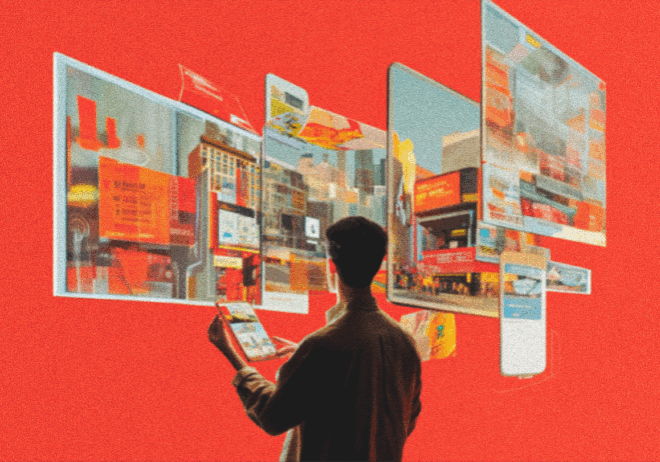
How CPG Marketing can Win in today’s Algorithmic Era
CPG marketing is no longer just about pushing products and hoping for brand loyalty. It’s 2025, and the landscape has shifted dramatically. Brands are navigating an era where algorithms govern everything — from what consumers see in their social feeds to what products they discover on e-commerce platforms.
That’s why today is about the Algorithmic Era of Marketing, where success hinges on mastering algorithmic availability, predictive outcomes, and reimagining the retail media space.
We have our hands on Carat’s 2025 report, “CPG Marketing at the Algorithmic Crossroads,” which has insights on algorithms and what brands can do to help themselves. As brands continue to pour resources into AI-powered solutions, the question isn’t whether algorithms will reshape CPG marketing—it’s whether brands can adapt fast enough to stay relevant. Let’s find out.
The shift from precision to algorithmic era
In the past, CPG marketing relied heavily on the Precision Era, focusing on mass personalization and performance marketing. However, this approach led brands down a rabbit hole, sacrificing long-term brand building for short-term conversions.
Between 2012 and 2024, global martech solutions grew by 4000%, while the average marketing budget as a percentage of net revenue declined by 26%. As a result, many brands lost the optimal balance between short-term wins and long-term growth.
In 2017-2018, P&G famously cut $200 million in digital ad spend, focusing heavily on performance marketing and hyper-targeting. While this improved short-term cost efficiency, it led to declining brand recognition and eventually forced P&G to reinvest in broader brand-building efforts.
The Precision era was not offering any good. Marketers struggled to unify data across platforms, leading to lower data match rates, ad waste, and performance media that lacked incrementality. Henceforth, marketing experts moved to algorithms. Brands no longer control the narrative—algorithms do. Whether Google decides what search results a shopper sees or social media platforms curate content to match user preferences, the power dynamics have altered.
Gearing up to winning the battle for algorithmic availability
The Algorithmic era doesn’t translate into an abundance of algorithms. So, availability actually poses one of the biggest challenges in CPG marketing.
There is not just a search engine site where a brand needs to make it or break it. There are AI systems that drive consumer decisions.
Brands must get the basics right. That means perfecting tagging, taxonomy, SEO, and link strategy across all touchpoints. But it doesn’t stop there. Brands must leverage predictive modeling by combining cultural signals with commerce data, creating a media brain that steers real-time decision-making.
Now, the tricky part is finding an audience. In 2025, mass personalization will no longer be enough. Community branding is one of the best routes to navigate in the algorithmic era for CPG brands. Look at Liquid Death marketing. Are they doing mass personalization or creating a big little community of drinkers (sober)?
Instead of chasing individual conversions, brands now focus on community intelligence to bring people together in culturally relevant ways. With algorithms dictating the flow of information, brands must go beyond personalized ads and focus on growth mapping — identifying high-value communities that share a passion or interest and building authentic connections with them.
Retail media leads the front for CPG marketing
Retail media has emerged as the next big frontier in CPG marketing. Platforms like Amazon, Walmart, and Google Shopping are transforming into retail media networks where brands can bid for premium placement and personalized recommendations.
New players, such as CVS and PayPal, are entering this arena, aiming to set new industry standards. However, the shift has also created a power imbalance, where retailers often maximize their returns at the expense of their brand partners.
Experts predict retail media could surpass linear TV by 2025 and paid digital media by 2027. By combining first-party data, incremental customer insights, and compelling content capabilities, brands can prove actual incremental category growth and enhanced retailer lifetime value.
Take Unilever, for instance. By integrating AI-driven insights with its retail media strategy, Unilever has optimized its touchpoints across multiple retail platforms, ensuring that its products remain top-of-mind for consumers. This approach drives incremental revenue and strengthens its relationship with retail partners.
Anticipating outcomes, not just measuring KPIs
In 2025, simply measuring KPIs is no longer enough. To stay ahead, brands must anticipate outcomes by forecasting shifts in consumer behavior, cultural trends, and market dynamics. This requires building intelligent simulations that dynamically update forecasts and adjust brand strategies in real-time, aligning with changing perceptions and competitive landscapes.
Algorithmic planning is redefining how brands approach decision-making. Instead of relying solely on static KPIs, brands now leverage AI-driven models to optimize touchpoints and content continuously. This approach enables marketers to pivot quickly, ensuring campaigns stay relevant and impactful.
According to Carat’s 2025 report, 49% of CPG CMOs actively explore ways to monetize touchpoints by integrating AI into their planning processes. This shift is ushering in a new era where real-time feedback loops, adaptive success criteria, and seamless collaboration between planners and buyers become the norm.
For brands like Nestlé, this outcome-driven approach has been transformative. Nestlé leverages AI to predict consumer sentiment shifts and fine-tune its marketing strategy in real-time, allowing the brand to stay ahead of competitors and maintain a dominant market position. This proactive strategy is no longer a luxury — it’s necessary for brands aiming to thrive in the Algorithmic Era.
Cut to the chase
CPG marketing will continue to evolve at the intersection of algorithms, AI, and predictive analytics. Brands that master algorithmic availability, harness the power of growth mapping, and build a value-driven relationship with retail media networks will emerge as the winners in this new era.

